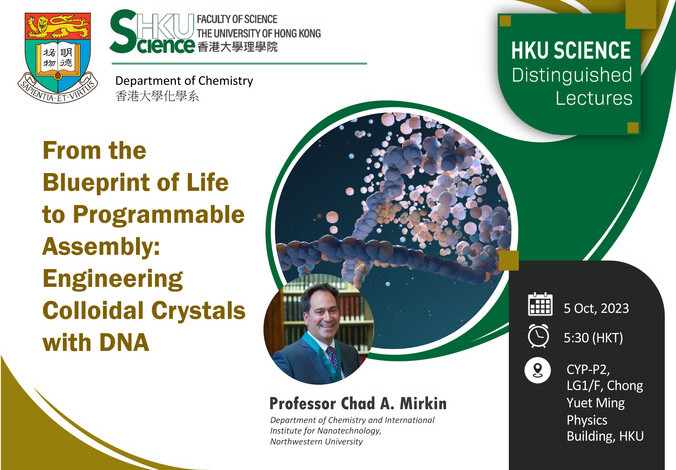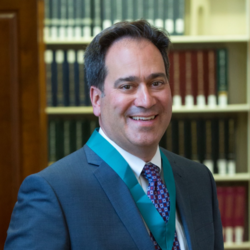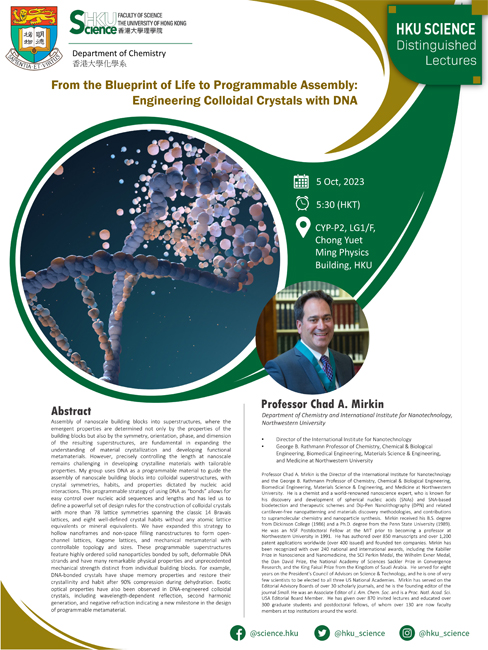Distinguished Lecture - From the Blueprint of Life to Programmable Assembly: Engineering Colloidal Crystals with DNA

- Date & Time
- October 5, 2023 (Thursday) | 5:30 pm (HKT)
- Venue
- CYP-P2, LG1/F, Chong Yuet Ming Physics Building, HKU
- Speaker
- Professor Chad A. Mirkin
Director of the International Institute for Nanotechnology, George B. Rathmann Professor of Chemistry, Chemical & Biological Engineering, Biomedical Engineering, Materials Science & Engineering, and Medicine at Northwestern University

Speaker Professor Chad A. Mirkin
Director of the International Institute for Nanotechnology, George B. Rathmann Professor of Chemistry, Chemical & Biological Engineering, Biomedical Engineering, Materials Science & Engineering, and Medicine at Northwestern University
He was an NSF Postdoctoral Fellow at the MIT prior to becoming a professor at Northwestern University in 1991. He has authored over 850 manuscripts and over 1,200 patent applications worldwide (over 400 issued) and founded ten companies. Mirkin has been recognized with over 240 national and international awards, including the Kabiller Prize in Nanoscience and Nanomedicine, the SCI Perkin Medal, the Wilhelm Exner Medal, the Dan David Prize, the National Academy of Sciences Sackler Prize in Convergence Research, and the King Faisal Prize from the Kingdom of Saudi Arabia. He served for eight years on the President’s Council of Advisors on Science & Technology, and he is one of very few scientists to be elected to all three US National Academies. Mirkin has served on the Editorial Advisory Boards of over 30 scholarly journals, and he is the founding editor of the journal Small. He was an Associate Editor of J. Am. Chem. Soc. and is a Proc. Natl. Acad. Sci. USA Editorial Board Member. He has given over 870 invited lectures and educated over 300 graduate students and postdoctoral fellows, of whom over 130 are now faculty members at top institutions around the world.


